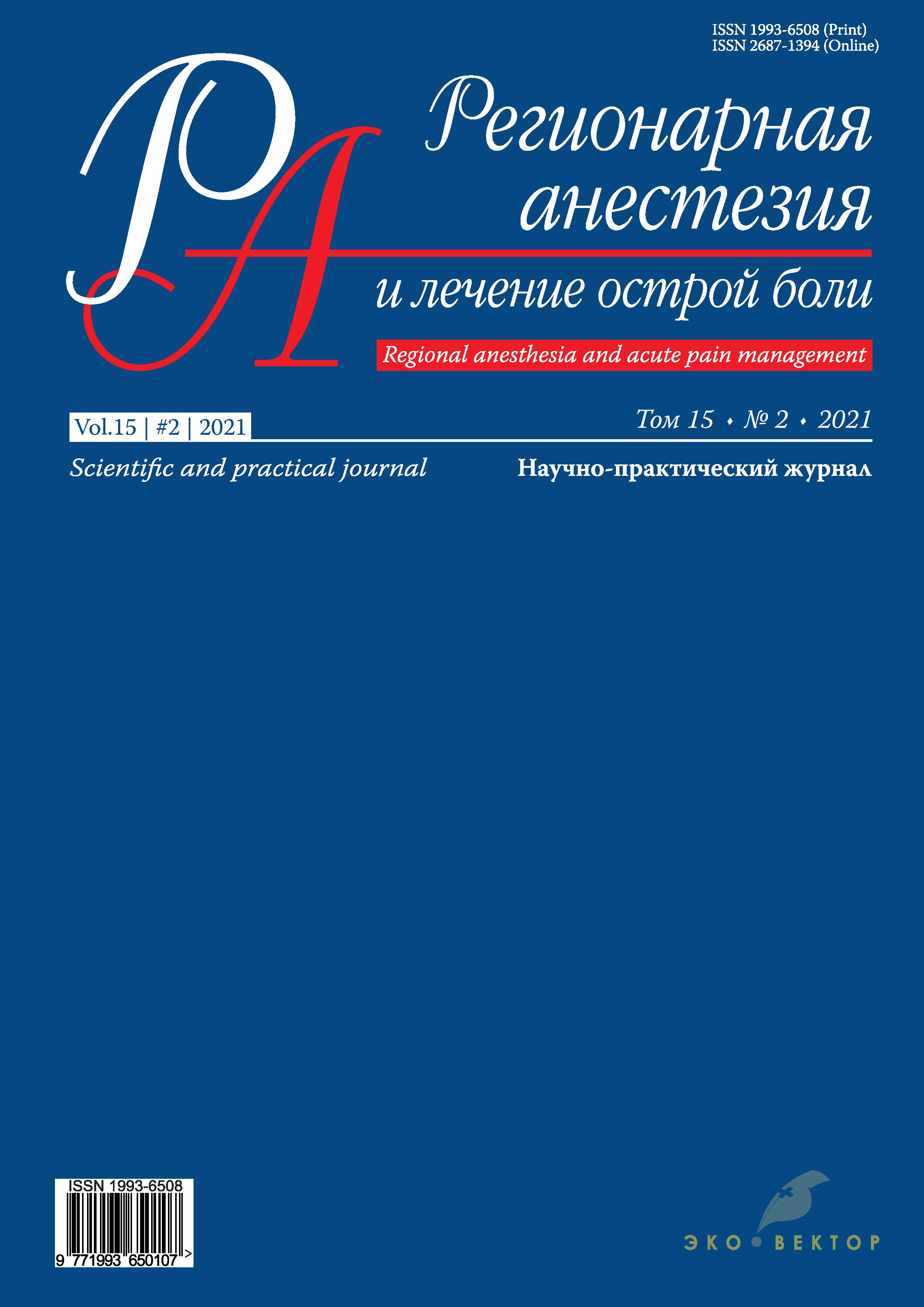Effect of lidocaine on oxidative activity of peripheral blood phagocytes
- 作者: Pozdnyakov O.B.1, Sitkin S.I.1, Emelyanova L.V.1
-
隶属关系:
- Tver State Medical University
- 期: 卷 15, 编号 2 (2021)
- 页面: 147-152
- 栏目: Original study articles
- ##submission.dateSubmitted##: 10.12.2021
- ##submission.dateAccepted##: 10.12.2021
- ##submission.datePublished##: 15.04.2021
- URL: https://rjraap.com/1993-6508/article/view/90118
- DOI: https://doi.org/10.17816/RA90118
- ID: 90118
如何引用文章
详细
BACKGROUND: Excessive production of reactive oxygen species (ROS) by leukocytes can cause damage to intrinsic tissues. The pathogenesis of sepsis is based on an excessive inflammatory response of the body. Several studies have reported the inhibitory effect of lidocaine on neutrophilic granulocytes.
AIM: This study aimed to analyze the effect of lidocaine on the oxidative activity of phagocytes.
MATERIALS AND METHODS: Blood from 16 healthy donors was used in this study. Leukocyte mass was extracted using spontaneous sedimentation. Half of the leukocyte samples were incubated in buffered physiological saline with lidocaine. The other half of the leukocyte samples were incubated in physiological saline without lidocaine. The generation of ROS was studied using two methods. Method 1 included a nitro blue tetrazolium (NBT) test), which is based on the ability of ROS to reduce NBT to insoluble diformazan. Method 2 was based on the chemiluminescence reaction. A culture of S. Aureus was used to induce the production of ROS.
RESULTS: NBT test revealed a decrease in the oxidative activity of leukocytes in the presence of lidocaine by 18% (p <0.05). The study of luminol-dependent chemiluminescence of leukocyte suspension in the presence of lidocaine revealed a significant 2-fold decrease in both spontaneous and stimulated respiratory activity of cells.
CONCLUSIONS: After incubation with lidocaine, phagocytes generated ROS to a significantly lower extent. However, their complete blockade was not recorded. This property of lidocaine may be used in clinical practice to treat an excessive inflammatory response in sepsis.
全文:
作者简介
Oleg Pozdnyakov
Tver State Medical University
编辑信件的主要联系方式.
Email: sptnrx@gmail.com
ORCID iD: 0000-0002-8789-1410
SPIN 代码: 5105-8197
Candidate of Medical Sciences
俄罗斯联邦, 26, 23, st. Artyukhina, Tver, 170039Sergey Sitkin
Tver State Medical University
Email: sergei_sitkin@mail.ru
ORCID iD: 0000-0002-2305-9238
MD, PhD, DSc
俄罗斯联邦, 26, 23, st. Artyukhina, Tver, 170039Ludmila Emelyanova
Tver State Medical University
Email: sergei_sitkin@mail.ru
ORCID iD: 0000-0001-5266-2880
俄罗斯联邦, 26, 23, st. Artyukhina, Tver, 170039
参考
- Ovechkin AM, Becker AA. Intravenous lidocaine infusion as a perspective component of multimodal analgesia, which affects on early postoperative outcome. Regional Anesthesia and Acute Pain Management. 2017;11(2):73–83. doi: 10.18821/1993-6508-2017-11-2-73-83 (In Russ).
- Cassuto J, Sinclair R, Bonderovic M. Anti-inflammatory properties of local anesthetics and their present and potential clinical implications. Acta Anaesthesiol Scand. 2006;50:265–282. doi: 10.1111/j.1399-6576.2006.00936.x.
- Cruz FF, Rocco PR, Pelosi P. Anti-inflammatory properties of anesthetic agents. Crit Care. 2017;21(1):67. doi: 10.1186/s13054-017-1645-x
- Lahat A, Ben-Horin S, Lang A, et al. Lidocaine down-regulates nuclear factor-kappaB signalling and inhibits cytokine production and T cell proliferation. Clin Exp Immunol. 2008;152(2):320–327. doi: 10.1111/j.1365-2249.2008.03636.x.
- Novikov V.E., Levchenkova O.S., Pozhilova Ye.V. Role of reactive oxygen species in cell physiology and pathology and their pharmacological regulation. Reviews on Clinical Pharmacology and Drug Therapy. 2014;12:13–21. doi: 10.17816/RCF12413-21 (In Russ).
- Zhao S, Chen F, Yin Q, et al. Reactive Oxygen Species Interact With NLRP3 Inflammasomes and Are Involved in the Inflammation of Sepsis: From Mechanism to Treatment of Progression. Front Physiol. 2020;11:571810. doi: 10.3389/fphys.2020.571810
- Nikitin EA, Kleymenov KV, Batienko DD, et al. New approaches to the impact on the pathogenetic links of sepsis. Medical Council. 2019;(21):240–246. doi: 10.21518/2079-701X-2019-21-240-246 (In Russ).
- Hollmann MW, Gross A, Jelacin N, Durieux ME. Local anesthetic effects on priming and activation of human neutrophils. Anesthesiology. 2001;95(1):113–122. doi: 10.1097/00000542-200107000-00021
- Ploppa A, Kiefer RT, Krueger WA, et al. Local anesthetics time-dependently inhibit staphylococcus aureus phagocytosis, oxidative burst and CD11b expression by human neutrophils. Reg Anesth Pain Med. 2008;33(4):297–303. doi: 10.1016/j.rapm.2007.05.012
- Ploppa A, Kiefer RT, Haverstick DM, et al. Local anesthetic effects on human neutrophil priming and activation. Reg Anesth Pain Med. 2010;35(1):45-50. doi: 10.1097/AAP.0b013e3181c75199
- Steinberg BE. Neutrophils: A Therapeutic Target of Local Anesthetics? Anesthesiology. 2018;128(6):1060–1061. doi: 10.1097/ALN.0000000000002205
- Boyakova NV, Vinnik YS, Filkin GN, et al. Indicators dynamics luminol-dependent and lucigenin-dependent chemiluminescence of neutrophils in blood at patients with stomach cancer after surgical treatment. Siberian Medical Journal (Irkutsk). 2015;(1):49–52.
补充文件










